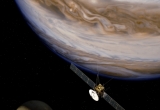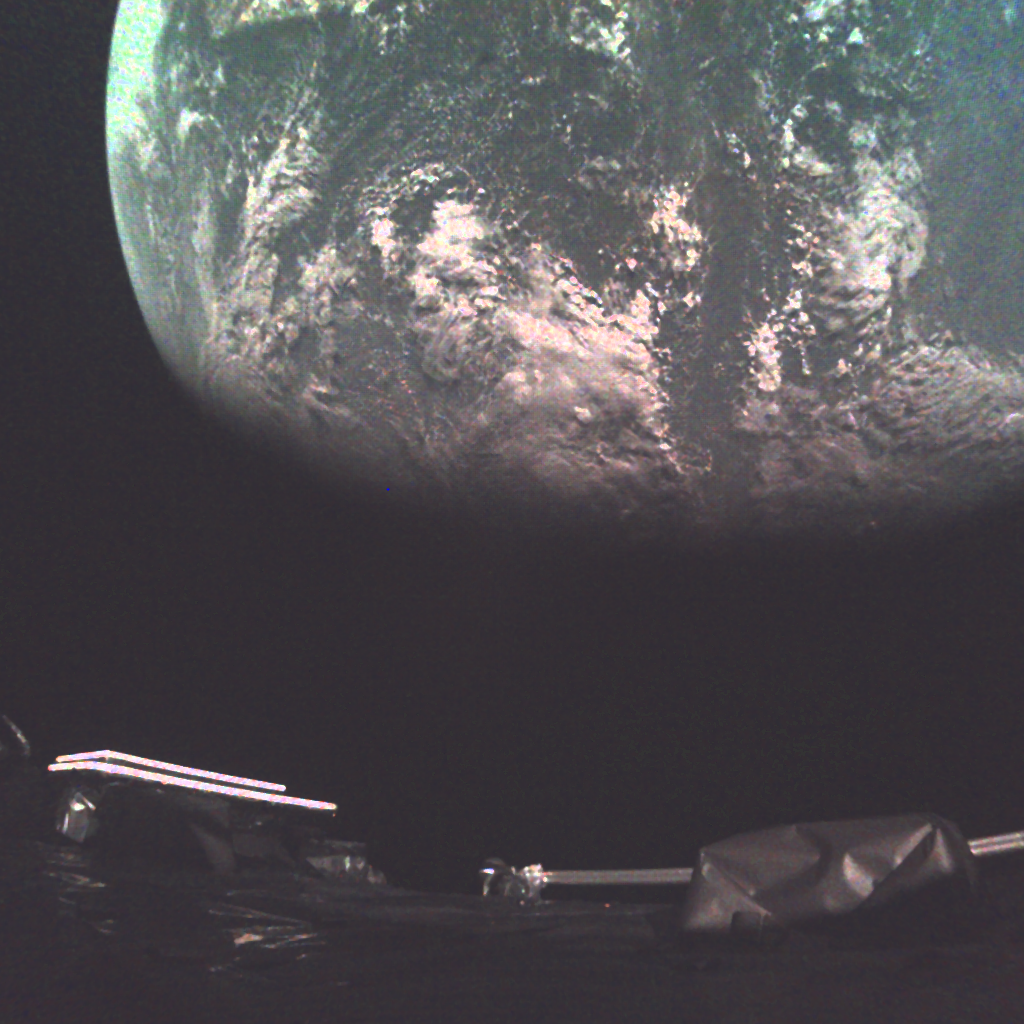JUICE/MAJIS

The main objectives of the JUICE mission will be to perform detailed observations of the giant planet Jupiter and three of its largest moons, Ganymede, Europa and Callisto. IAS is in charge of the scientific and technical developement for the visible and infrared imaging spectrometer MAJIS (Moons And Jupiter Imaging Spectrometer) which is part of the JUICE payload. The instrument was delivered in 2021. The mission was launched from Kourou with an Ariane 5 on April 14, 2023 à 14:14:29.
Contacts : François Poulet (PI), Cydalise Dumesnil (project manager)
MAJIS is the visible and infrared imaging spectrometer which is on board the L1 ESA/JUICE mission towards Jupiter and its icy moons. This major JUICE instrument, launched by the penultimate Ariane 5 on April 14, 2023, is under the technical and scientific responsibility of the IAS.
JUICE is the first L-class mission of the ESA's science program. The major objectives of the JUICE mission are to better understand the physical processes that govern all the bodies of the Jovian system and to constrain both the habitability of Ganymede and Europa and the formation of the Jupiter satellite system.
JUICE will in particular make it possible to compare Europe and Ganymede in order to establish their characteristics related to their geophysical activity and their habitability.
More specifically, the MAJIS instrument aims to:
- Characterize and determine the relationships between the internal structure and the surface of Ganymede by studying these two envelopes
- Characterize the icy shell and liquid water in order to specify the heterogeneity of the ice and the nature of the surface-ice-ocean exchanges
- Determine the composition of the surface and in particular the chemical properties which could provide clues to habitability
- Understand the formation of geological structures, including traces of recent activities and identify and characterize the landing sites of in situ exploration missions
- Understand Jupiter's irregular satellite system
- Monitor the volcanic activity of Io
- Assess the structure and dynamics of Jupiter's atmosphere
- Determine the exogenic and endogenic processes that take place on the surface of icy moons
- Constrain the origin of the Jovian system
The LESIA (Paris Observatory) is a partner of this service as responsible for the production of "geometric" cubes (position, distance, incidence, emergence and phase for each pixel) in the context of the ground segment. The LPG (Nantes) participates in the operations of the instrument.




